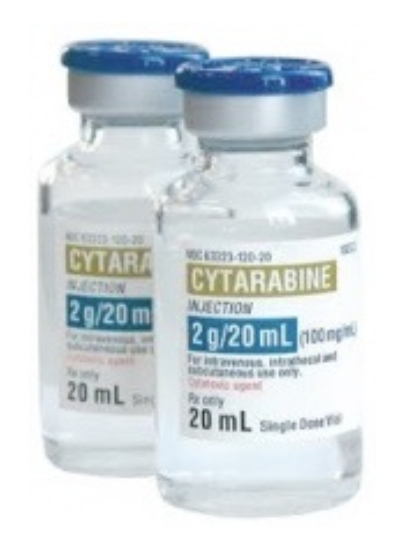2nd Antivirals
1/22
There's no tags or description
Looks like no tags are added yet.
Name | Mastery | Learn | Test | Matching | Spaced |
|---|
No study sessions yet.
23 Terms
MOA of Antivirals
Prevent or eliminate one of the steps involved in the viral replicative cycle
Antiviral Drugs
Have a limited use in veterinary medicine
Mainly for the treatment of herpesvirus infections
Topically for the treatment of ocular lesions
Antiviral Drugs
Species-specificity of viruses
Limited research and development of antiviral drugs for animals compared to humans
Priority for preventative measures in veterinary medicine, i.e., vaccination and biosecurity measures, for controlling viral diseases
Some animal viral infections can be zoonotic, thus, a need to be cautious with the use of antiviral drugs in animals to avoid the development of resistance and potential transmission to humans
Off-label use of antiviral drugs should be done with caution and often requires specific dosage adjustments
Idoxuridine
Trifluridine
Mainly active against DNA viruses such as herpesvirus and poxvirus
Both are commercially available as topical ophthalmic preparations for the treatment of herpetic keratitis
Idoxuridine
1 week
Trifluridine
Due to the high cost, ______ should be used initially, and if no response is seen within _____, _______ therapy should be initiated.

Cytarabine
Used as an antineoplastic agent in dogs and cats for treatment of leukemia and lymphoma
Causes bone marrow suppression, which limits its use as an anti-viral agent
Vidarabine
Used topically in the treatment of herpes keratitis
Less potent against feline herpesviruses than idoxuridine or trifluridine
Ribavirin
Its strongest antiviral activity is against RNA respiratory viruses (influenza A and B) and herpes viruses
Myxoviruses, paramyxoviruses, arenaviruses, bunyaviruses, retroviruses, adenoviruses, and poxviruses
Aerosolized is preferred for treating susceptible respiratory infections
Acyclovir
Used as a treatment for equine herpesvirus encephalitis
The equine herpesvirus type 1 (EHV-1)
Causes myeloencephalopathy, respiratory disease, abortion, and neonatal infections
Famciclovir
Used to treat herpesvirus-1 ( FHV-1) associated disease in cats
Valacyclovir
Absorbed as the prodrug → Converted to the active drug—acyclovir—in the patient
Zidovudine
More commonly known as AZT
The use of AZT has been investigated in cats as a clinical therapy for Feline Immunodeficiency Virus (FIV)
• How is FIV spread?
The primary mode of transmission is through bite wounds
AZT
Zidovudine is commonly known as?
AZT / Zidovudine
Shown to reduce clinical signs when given to two FIV-positive cats at a dose of 10 mg/kg twice a day subcutaneously for a period of 3 weeks
Foscarnet
It inhibits DNA and RNA polymerases and reverse transcriptase
Viruses inhibited include avian myeloblastosis, Moloney murine leukemia, Rauscher leukemia, influenza, bovine leukemia, African swine fever, baboon endogenous virus, simian sarcoma, human herpes, and human immunodeficiency viruses
Amantadine and Rimantadine
Effective in the prevention of respiratory infections caused by influenza A virus but not as effective as vaccination
Have been used to treat flu outbreaks, resulting in shorter duration fever and more rapid resolution of symptoms
Its use in poultry is thought to be responsible for the amantadine- resistant influenza strains seen in the Chinese avian flu pandemic in 2005
Rimantadine
Shows greater promise as an antiviral drug in horses
Amantadine
Used for the treatment of pain syndromes in animals
Proposed MOA: inhibition of the neurotransmitter N- methyl-D-aspartate (NMDA)
Interferon
Potent cytokines
Anti-viral
Immunomodulating
Anticxncxr properties
Interferon
Licensed for use in the treatment of viral disease in dogs and cats in Japan and other countries
Used in feline leukemia virus (FeLV) and feline immunodeficiency virus (FIV) in cats, and bovine viral diarrhea (BVD) in cattle.
Used as part of the treatment regimen to help boost the immune response and aid in the recovery of dogs canine parvovirus infection
L-Lysine
An essential amino acid that blocks the availability of arginine that is necessary for the replication of herpesviruses
L-Lysine
May also be efficacious in cases of herpesvirus keratitis in cats
A prophylactic dose of 500 mg 6 hours prior to viral challenge, and then continued at 500 mg PO q12h decreased the severity of the ocular lesions in cats compared to controls
Summary of Antivirals
Idoxuridine & Trifluridine
DNA virus
herpes-, pox-
commercially available as topical ophthalmic
herpetic keratitis
Cytarabine
antineoplastic agent
leukemia & lymphoma
bone marrow suppression
limited use as anti-viral agent
Vidarabine
topical — herpes keratitis
less potent against feline herpesvirus than I&F
Ribavirin
aerosolized pref. for susceptible resp. infections
strongest antiviral activity against RNA respiratory virus and herpes virus
myxo-, paramyxo-, arena-, bunya-, retro-, adeno-, pox-
Acyclovir
equine herpesvirus encephalitis
EHV-1
Famciclovir
FHV-1
Valacyclovir
prodrug -> Acyclovir
Zidovudine
AZT
FIV
Foscarnet
Inhibits DNA & RNA polymerases and reverse transcriptase
Amantadine & Rimantidine
prevent resp. infec. by influenza A virus
Amantadine
poultry — resistance
treatment of pain syndromes
inhibits NMDA
Rimantidine
better in horses
Interferon
potent cytokines
antiviral
immunomodulating
anticxncxr properties
FeLV
FIV
BVD
aid in CPV
L-lysine
essential amino acid
blocks availability of arginine
herpesvirus
herpesvirus keratitis